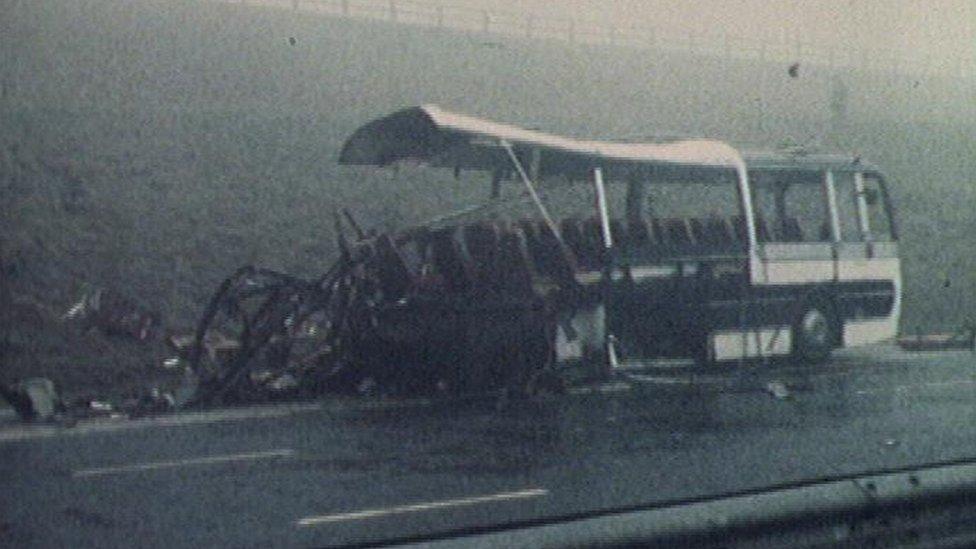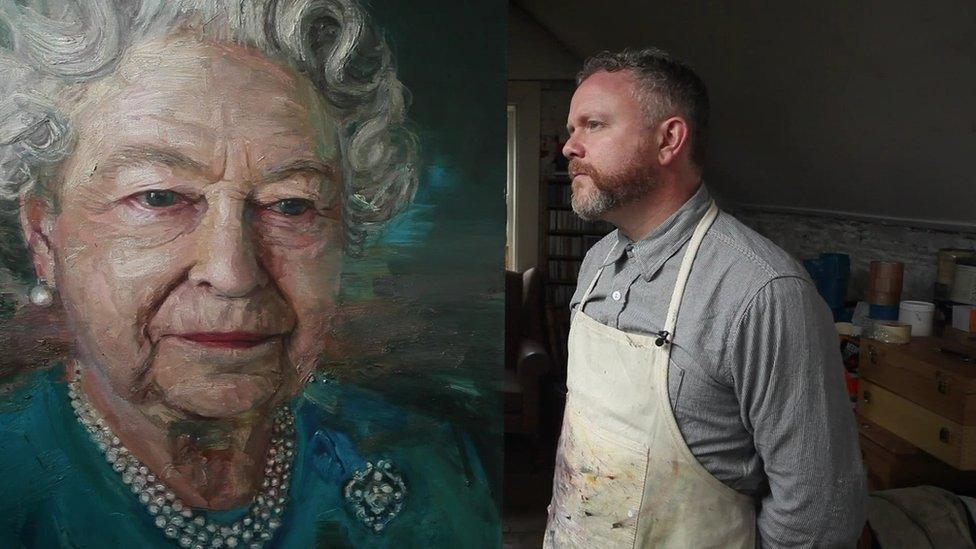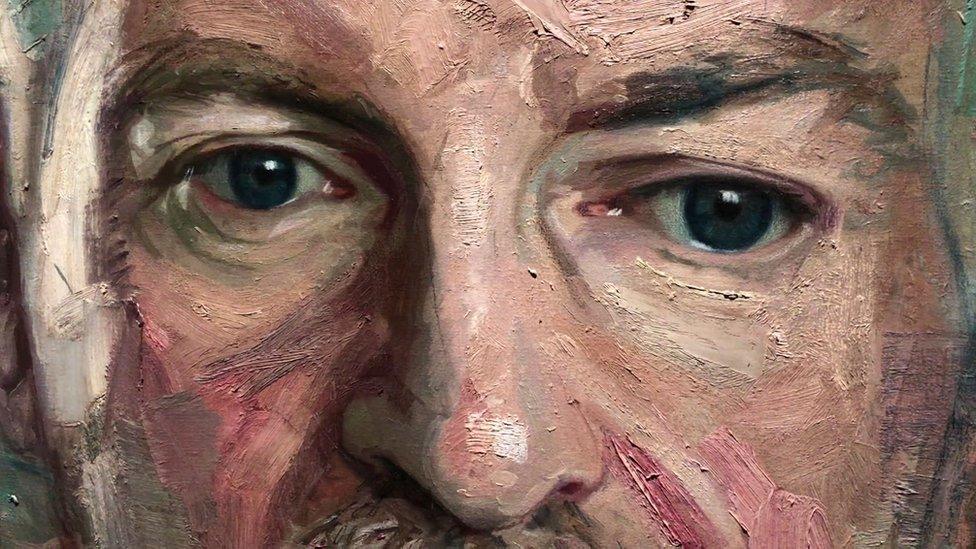Silent Testimony: Reflecting on loss through art
- Published
Colin Davidson painted 18 people as part of his Silent Testimony exhibition
Mo Norton lost her brother in an IRA bombing 44 years ago.
She was one of the 18 people painted by Colin Davidson for his Silent Testimony exhibition.
The portraits are connected by each individual's experience of loss due to the Troubles, and in Mo's case it was her big brother who was killed in the M62 coach bombing in West Yorkshire, external 44 years ago.
As the touring exhibition came to the Nerve Visual Gallery in Ebrington, she has reflected on her experience of loss through The Troubles, three years after the painting was first displayed in the Ulster Museum.
Her brother, Terence Griffin, was a 24-year-old British soldier who had served two tours in Northern Ireland and was home on leave when he was killed on 4 February 1974.
Clinging to straws
Three years have passed since Colin Davidson's Silent Testimony exhibition was premiered, and many more since Mo and her family received the heartbreaking news that their loved one was a victim of the attack carried out by the IRA.
She told BBC Radio Foyle about the awful day she received the news.
"We had to wait a long time for confirmation that he had died, because we kept watching the television and we could see all the carnage on the news," she said.
"We even saw some of his personal effects on the motorway and that was pretty hard.
"But you grasp and sort of cling to straws and I was thinking, 'maybe he's injured and maybe he can't tell us he's injured'. We kept ringing but got no news.
"Then at about five o'clock - after waiting around 17 hours - my mother finally rang again and she said: 'Is my son ok?'
"A woman answered and said that she'd put his battery commander on and he replied: 'I'm awfully sorry to tell you he's been positively identified and he's dead.'"

The coach was carrying soldiers and their families home from a weekend break
Terrence was the only boy in the family and his parents had been married for nine years before they had their eldest child - Mo says they had waited a long time for him.
"He was a lovely person and you know what, when he used to come home from Ireland and we'd ask him what it was like, he'd say: 'The Irish are lovely people, we're just trying to keep two sides apart'.
"You know, it was just tragic. Tragic. But I don't have any hate or bitterness in me," she said.
His sister wants those who visit the exhibition in Londonderry to take away from the experience the understanding that hurt and trauma can exist for a long time.
She continued: "Even though things are a lot more peaceful here, it's not easy to live with losing somebody so tragically.
"I'm not sure if I'll ever understand what it was all for really."

Colin Davidson's Silent Testimony exhibition opened in 2015 at the Ulster Museum in Belfast
It was in 2013 that the world-renowned Belfast artist, Colin Davidson approached the WAVE Trauma Centre - an organisation formed to support people suffering loss as a result of the Troubles, the three-decade conflict between nationalists and unionists that killed some 3,600 people before the Good Friday Agreement was signed in 1998 - to undertake the project.
WAVE put him in touch with 18 individuals from across Northern Ireland, the Republic of Ireland and England, which is how Mo found herself involved in the project.

Colin Davidson painted a portrait of The Queen in 2016
Colin Davidson told BBC Radio Foyle that he found the experience traumatic.
He said nothing could prepare him for hearing the intimate horror of their stories.
"This massive section of our community was really, in a sense, paying for everybody else's peace and they had stories which they hadn't really had an opportunity to tell before.
"I put the energy of the feeling that I had, the energy of hearing their stories back into the work.
"There is a sense that we are looking at people who aren't aware we're here, we're looking at people thinking very private thoughts of their own.
"We are in a sense intruding."
'Dealing with loss'
"I think Colin has captured in every one of those portraits, the hurt in people's eyes and I think that has helped," reflected Mo.
"Because I know that the painting will always be there, so it's like leaving something so that hopefully people won't forget what happened in the conflict."

The exhibition runs at the Nerve Visual Gallery in Derry until 16 September.
The CEO of WAVE Trauma Centre, Sandra Peake, has urged politicians in the area to go to the exhibition.
"Look into these people's eyes and say 'We can make this place work,'" she said.
"They have to make this place work - we should never have to put other families through what has happened in the past.
"While there are 18 people here, they represent the thousands that live within our community."
Colin simply says: "Don't forget.
"The fact is, they are dealing with loss.
"There is very little we can do, and really, all I have done is remind people that this massive section of our community actually exists."